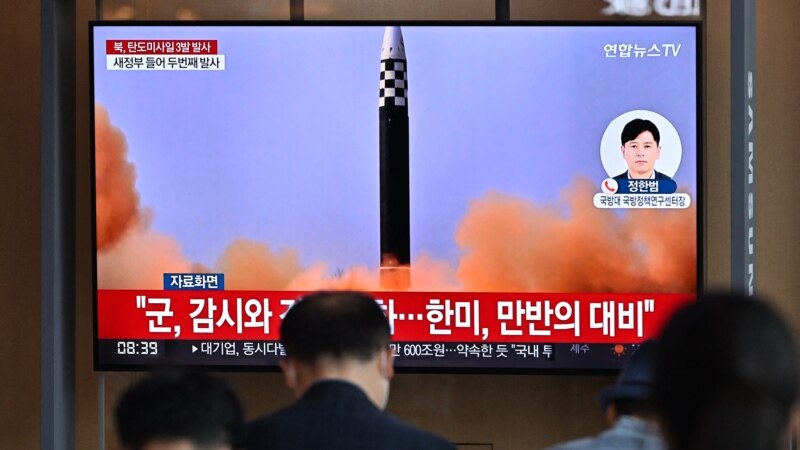The United States said Wednesday it would seek new sanctions on North Korea at the United Nations after Kim Jong Un’s regime fired a volley of missiles, including possibly its largest intercontinental ballistic missile.
The launch came just hours after U.S. President Joe Biden left Asia.
North Korea has also been conducting “operational tests” of a nuclear detonation device, Kim Tae-hyo, Seoul’s first deputy director of the National Security Office, said.
His warning adds to the drumbeat of predictions from U.S. and South Korean officials, who have been saying for weeks that Kim’s regime is close to conducting its seventh nuclear test.
Three missiles, including one ICBM, were fired from the Sunan area in Pyongyang, Seoul said, one of nearly 20 weapons tests by North Korea so far this year, prompting joint U.S.-South Korea live-fire missile drills in response.
Washington plans to call for a U.N. Security Council vote on tougher sanctions on Pyongyang after the tests, a senior U.S. official said.
The official expected a vote “in the coming days” and noted that a previous Security Council resolution called for further consequences in the event of a further ICBM launch.
“That was a provision of that resolution. That’s precisely what happened and so we feel it’s now time to take action,” the official said on condition of anonymity.
The three early morning ballistic missile launches came within an hour of each other, South Korea’s Joint Chiefs of Staff said in a statement.
The Wednesday launches were “clearly timed for President Biden’s return after his visit to South Korea and Japan,” Ewha University professor Park Won-gon said, adding that Biden had not even landed in the United States when they happened.
During Biden’s visit, Seoul and Washington announced they would look at ramping up joint military exercises, which had been scaled back for COVID-19 and a bout of failed diplomacy with the North.
They also discussed deploying more U.S. tactical assets to the peninsula, measures that would likely enrage Pyongyang, which views the drills as rehearsals for invasion.
Despite struggling with a recent COVID-19 outbreak, the North has resumed construction at a long-dormant nuclear reactor, new satellite imagery has indicated.
Earlier this month, North Korea confirmed its first omicron cases in Pyongyang, and the virus has since torn through its unvaccinated population of 25 million.
More than 3.1 million people have been sick with “fever,” North Korean state media said early Thursday, with 68 deaths since the outbreak began in late April.
North Korea has continued to conduct missile tests since it declared a national emergency over the COVID outbreak.

